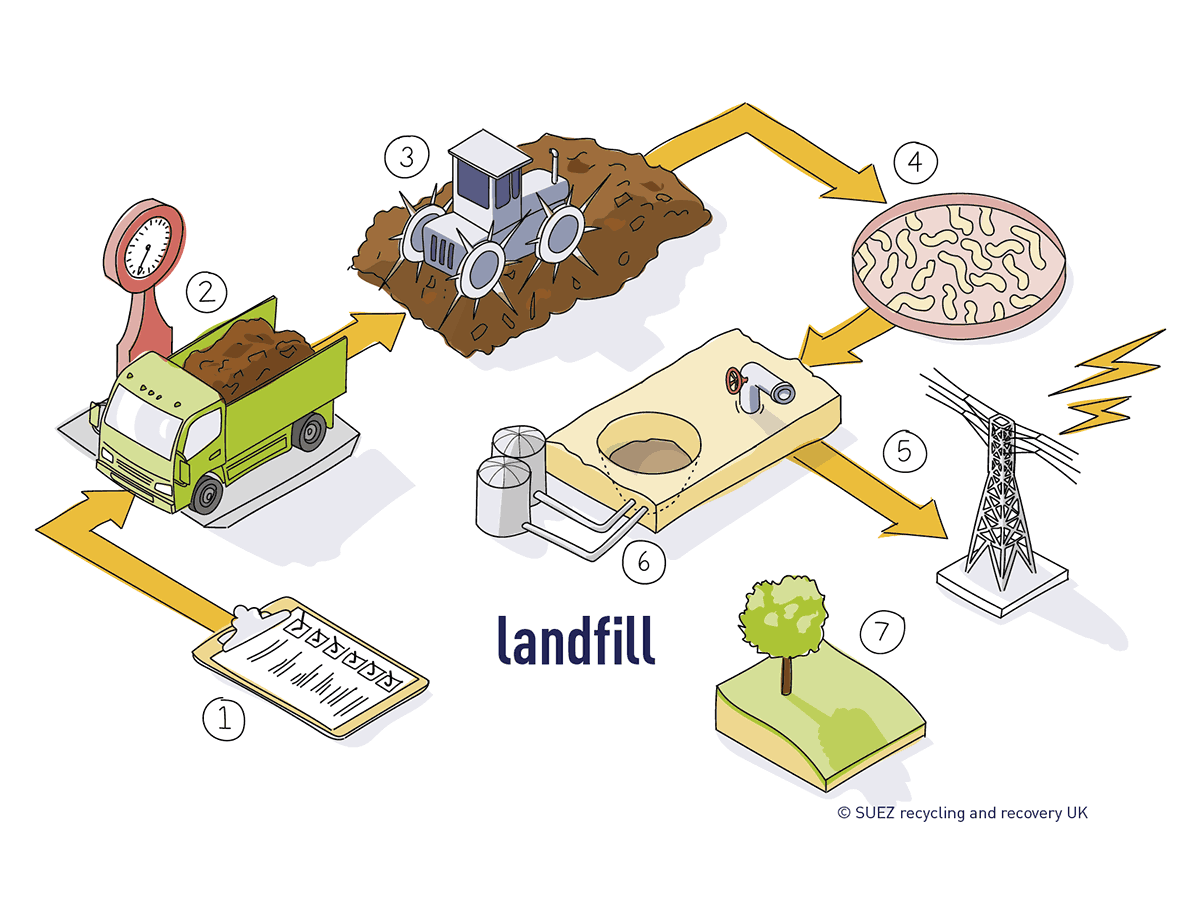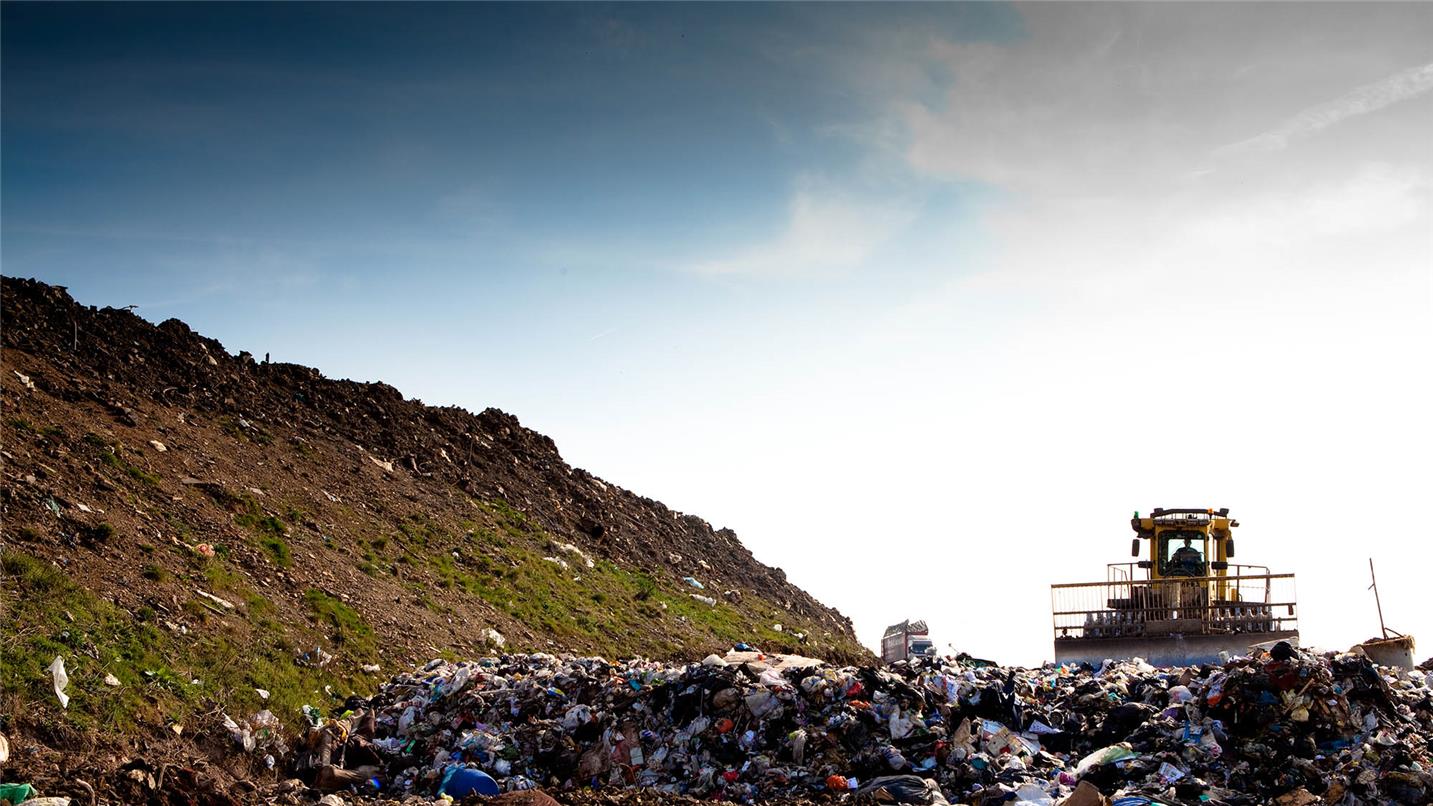How does a landfill work?

1. Design
A new landfill is engineered with essential containment systems and structures. These include liners, gas pipes, leachate collection control and boreholes for monitoring. These systems stay in operation for up to 50 years or so after a site stops receiving waste to ensure the landfill’s stability and protect the environment.
2. Acceptance
Waste arriving at the landfill is weighed and checked to ensure it complies with the landfill operating licence. This waste is then discharged into the ‘tipping face’ – the active / operational part of the landfill.
3. Compaction
Tipped waste is progressively compacted through the day by specially adapted plant and bulldozers, which cover the waste with layers of material, such as soil.
This cover layer helps to reduce odour from the waste and deter scavengers, like rodents, flies and birds. At the end of each day, the operational area of the landfill has a complete covering layer.
4. Decomposition
Waste in landfills decomposes as microbes break it down naturally under anaerobic (absence of oxygen) conditions. This decomposition, combined with rainwater filtering through the landfill, produces liquid, called leachate, and gas.
5. Gas
The landfill gas, which is collected in storage tanks, is a mixture mainly of carbon dioxide and methane. This gas is extracted through gas wells and collection pipes, and either:
- burned off in flare stacks, or
- fed to an on-site energy generation plant and converted into electricity, which can be exported to the National Grid. Electricity production may continue for years after the landfill closes.
6. Leachate
The leachate is contained by the landfill’s lining system and drains via pipes into large storage tanks. From here, it is pumped either:
- into tankers and taken off site to be treated, or
- to an on-site treatment plant, where it is cleaned and discharged to sewer or a water course. This system can be used to manage ongoing leachate production following closure of the landfill site.
7. Aftercare
Depending on waste type and volume, landfills take many years to reach maximum capacity. Then a landfill is capped with a final layer of cover material, clay and vegetation. This cap layer forms a barrier, keeping odours in and rainwater out. The site is planted to suit its future use when it will be restored for recreation or light cultivation.
